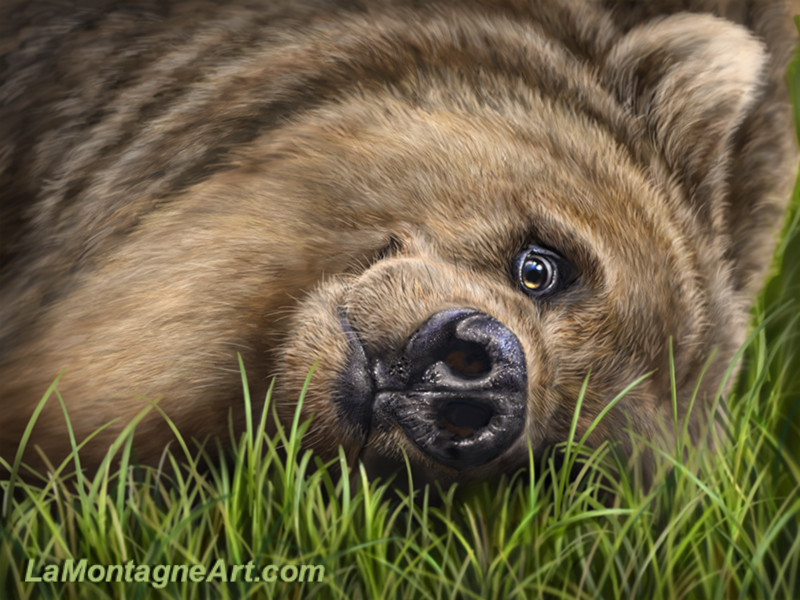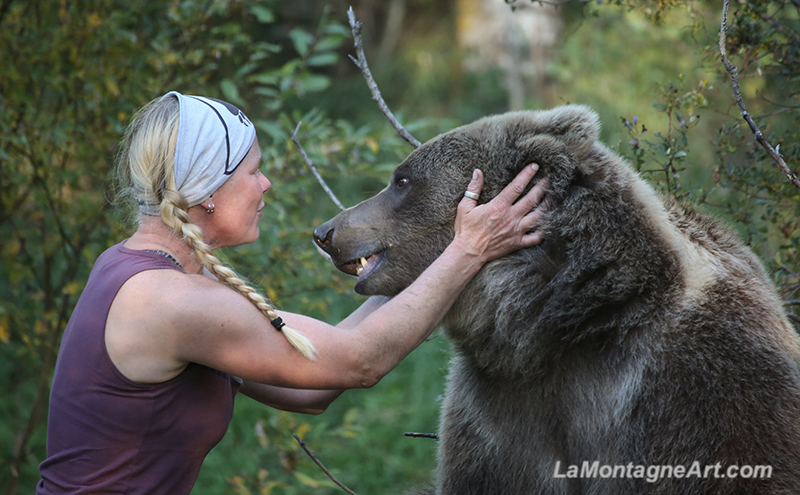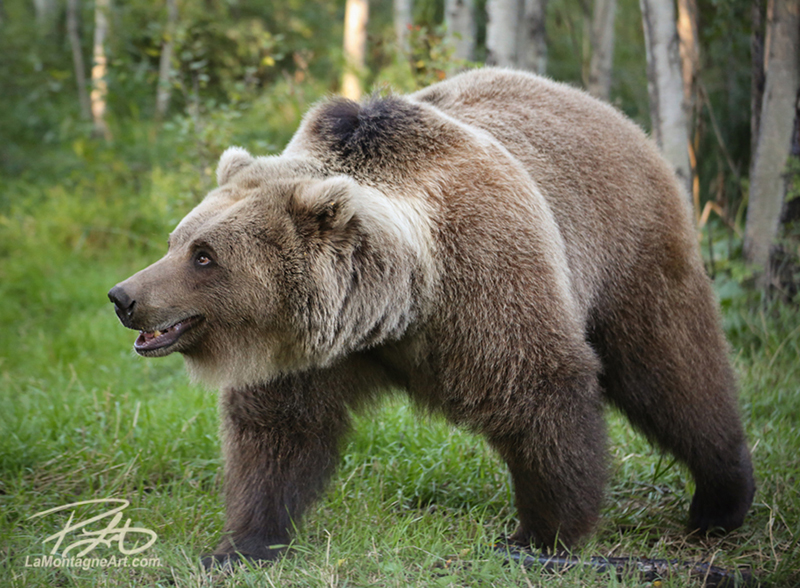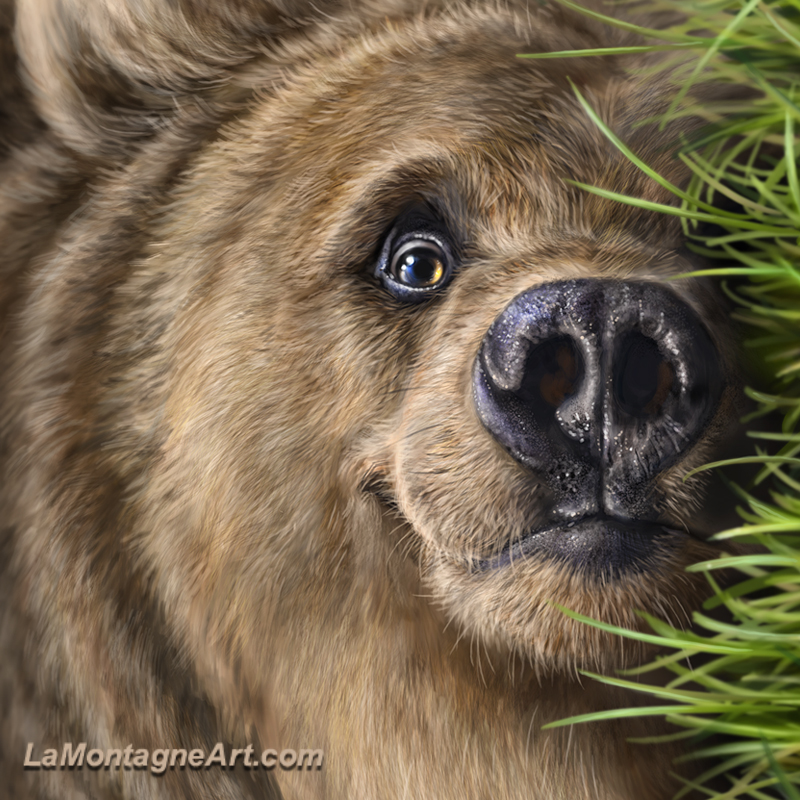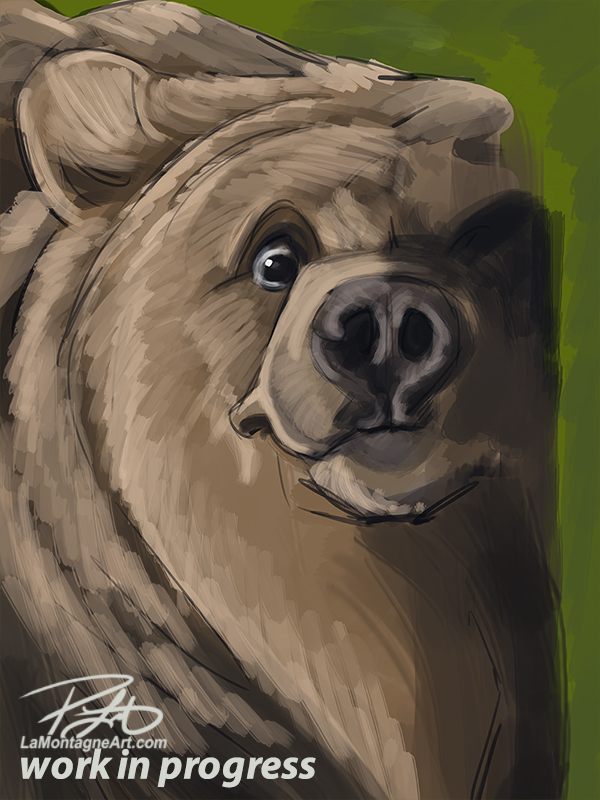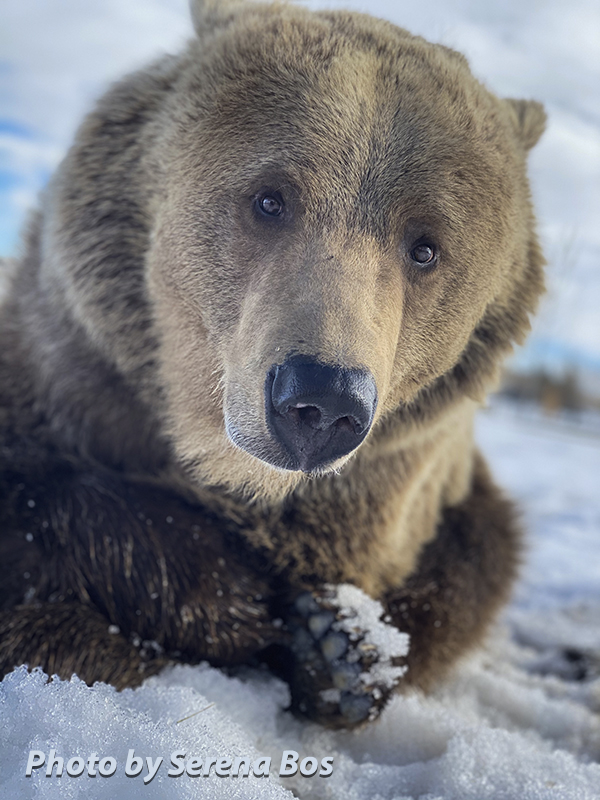
Art for a living is a lot more than the general assumption that I’m just drawing and colouring all day. Like any business, there is a balance between creating or producing something and selling or marketing that something.
After Expo cleaned me out of stock, an excellent problem to have, I had to re-order prints and the packaging that goes with it. In addition, I needed to fill orders for my retail clients and have stock to sell at an upcoming market and on my online store.
Even though I work with excellent vendors who deliver outstanding service, we’re all familiar with the supply chain challenges that still create delays. But over the past couple of weeks, all orders have finally arrived. I’ve spent many hours signing and packaging each print and the past week delivering them. Now I’m preparing for this Saturday’s Mountain Made Market at the Canmore Civic Centre.
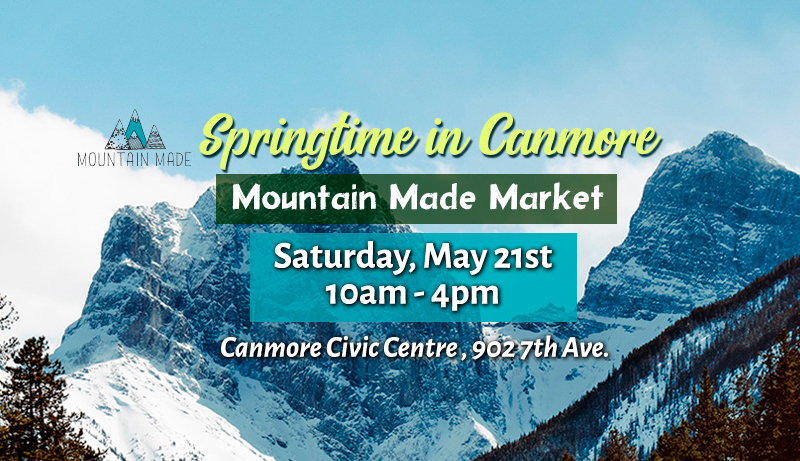 Last week, I drove to Innisfail to Discovery Wildlife Park for the first time this year to deliver the largest print order they’ve ever placed and their first order of my high-quality vinyl stickers.
Last week, I drove to Innisfail to Discovery Wildlife Park for the first time this year to deliver the largest print order they’ve ever placed and their first order of my high-quality vinyl stickers.
I had recently updated their park map and flyer for them, and It’s already printed and available for guests. In addition to financial contributions, there are always other ways to help your favourite causes and organizations, especially if you have the marketable skills they need.
Of course, there’s no point driving those couple of hours without taking reference photos and spending time with the staff and animals. Timing and luck delivered a beautiful warm day.
At Expo this year, my friend Kayla, a zookeeper at the Calgary Zoo, said that she wanted to come up and see Discovery Wildlife Park and meet their head keeper, Serena. So I told her I’d be going up soon, and we timed it for her days off. I arranged it with Serena to make sure it was convenient, gave Kayla directions, and met there on Thursday morning.
Here’s Serena on Thursday, feeding last year’s fast growing rescue cubs, Bos and Piper.
 The Calgary Zoo and Discovery Wildlife Park have a great relationship. Staff from one will often visit the other, participate in educational and training days, and learn from each other’s procedures and policies.
The Calgary Zoo and Discovery Wildlife Park have a great relationship. Staff from one will often visit the other, participate in educational and training days, and learn from each other’s procedures and policies.
So, I was happy to introduce Serena and Kayla and connect them for what ended up being a partial professional development day. Of course, I was delighted to tag along and eavesdrop while snapping photos.
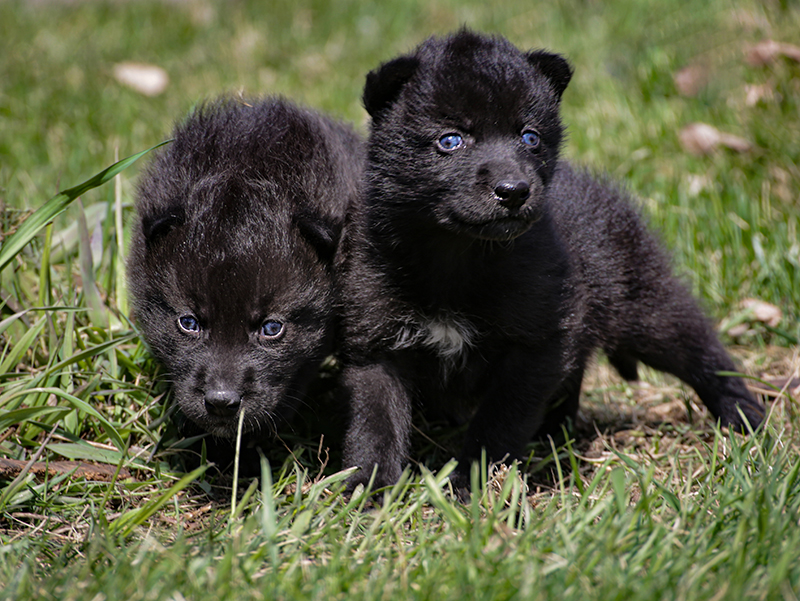 We got to meet their new wolf pups, though only the keepers who feed them are allowed to touch them. The vet has prohibited any other contact until the pups have their vaccinations next month. But I got plenty of photos, and there will most definitely be a painting coming this year.
We got to meet their new wolf pups, though only the keepers who feed them are allowed to touch them. The vet has prohibited any other contact until the pups have their vaccinations next month. But I got plenty of photos, and there will most definitely be a painting coming this year.
On Monday, I was again on the road to deliver another print order to the Calgary Zoo. In the almost ten years they’ve been selling my prints, this was their largest order, a good sign for what we’re all hoping is an economic recovery year.
I had a good visit catching up with their retail manager, Kathryn, and spent some time meeting the new staff, talking about my work, and answering their questions. Since they’re the ones presenting my art to the public and I frequently talk to people who have seen and bought my work there, I’m happy to give the staff any help they need.
Of course, no trip to the zoo would be complete without wandering and taking photos and I was granted yet another beautiful day for it.
No matter how well I plan, some animals prove to be elusive when it comes to reference photos. From poor lighting, posing, vantage point, or timing, it can be frustrating when I can’t get the photos I want. I keep trying, however, as eventually fortune does smile, and it’s always unexpected.
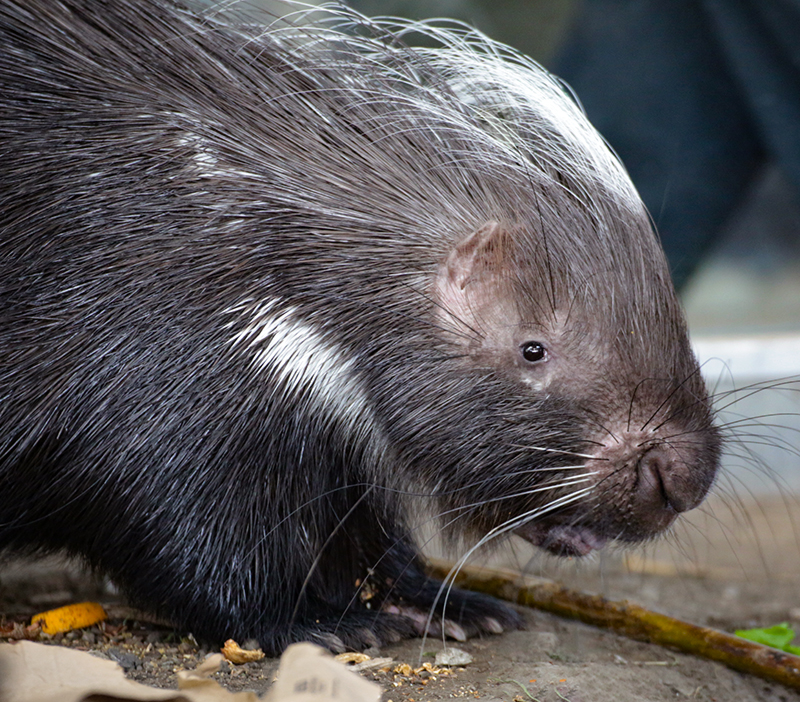 After years of failure, I might have finally got the reference I needed to paint an African porcupine. They had just been given food for which they had to work a little, which is a form of enrichment. The lighting was good, I could get down to eye level, and the little critter kept looking right at me. I was shooting through glass, but if there isn’t much glare and I can cup my hand around the lens hood, that often works just fine. I must have taken 300 shots. I discarded most of them on the first pass, but there are painting reference potentials in those I kept.
After years of failure, I might have finally got the reference I needed to paint an African porcupine. They had just been given food for which they had to work a little, which is a form of enrichment. The lighting was good, I could get down to eye level, and the little critter kept looking right at me. I was shooting through glass, but if there isn’t much glare and I can cup my hand around the lens hood, that often works just fine. I must have taken 300 shots. I discarded most of them on the first pass, but there are painting reference potentials in those I kept.
From the two visits, I got good reference for wolf pups, a lion, a grizzly, and that African porcupine.
Once this Saturday’s market is behind me, I’ll have a lot more time to devote to painting, and I expect to share a new one with you, already half done, by the end of next week. I have plenty of recent reference stored up and am anxious to work from them.
Just in time for this Saturday’s market, my order from Pacific Music & Art arrived on my doorstep on Monday. I’m grateful to Mike for such a quick turnaround to restock me with magnets, coasters and aluminum art for this weekend’s market. But the best surprise in the box was my first order of the 2023 “Wild Animals” calendar! That’s one of my favourite paintings on the cover, Grizzly on Grass.
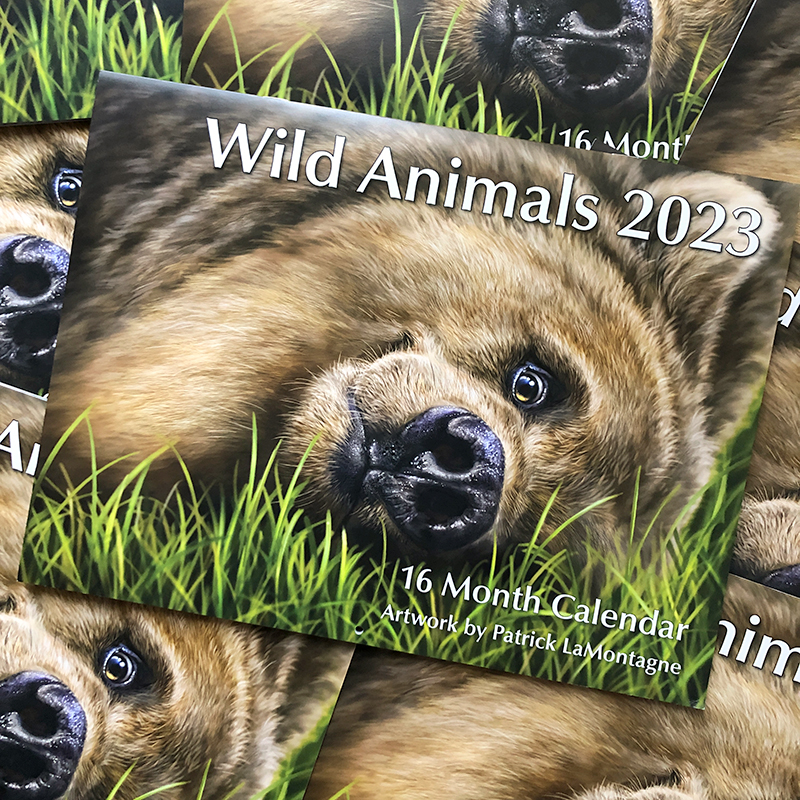 The shipment arrived while I was at the zoo, so I sent a text to our next-door neighbours asking them to grab it for me off the step for the third time in recent weeks. For a guy who is home most of the time, all my recent orders have arrived while I’ve been away. My neighbours got the first calendar as a Thank-You, but you can get yours at The Mountain Made Market this weekend at the Canmore Civic Centre.
The shipment arrived while I was at the zoo, so I sent a text to our next-door neighbours asking them to grab it for me off the step for the third time in recent weeks. For a guy who is home most of the time, all my recent orders have arrived while I’ve been away. My neighbours got the first calendar as a Thank-You, but you can get yours at The Mountain Made Market this weekend at the Canmore Civic Centre.
Next week, I will have the calendars available in the online store; I need to work on the calculations to keep the shipping costs as low as possible. I will let you know when you can order them.


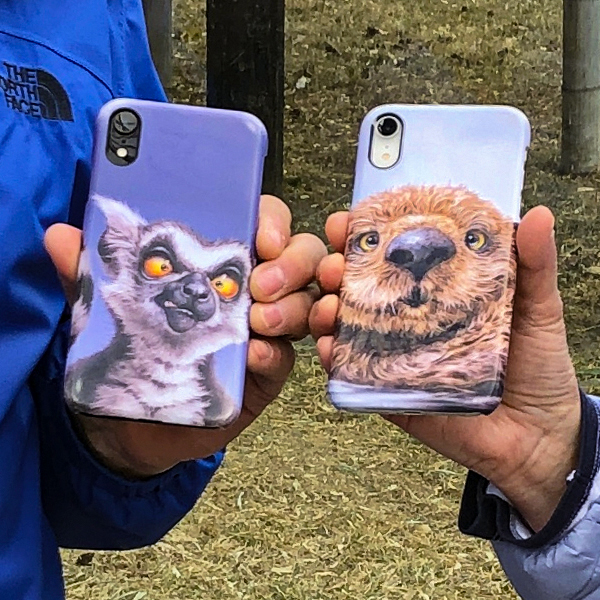
 From a business perspective, I want the zoo to be busy. But I’ll admit that I prefer it quiet when I’m taking pictures. I don’t have the patience for screaming children running around my feet and bumping into me while trying to hold the camera steady.
From a business perspective, I want the zoo to be busy. But I’ll admit that I prefer it quiet when I’m taking pictures. I don’t have the patience for screaming children running around my feet and bumping into me while trying to hold the camera steady.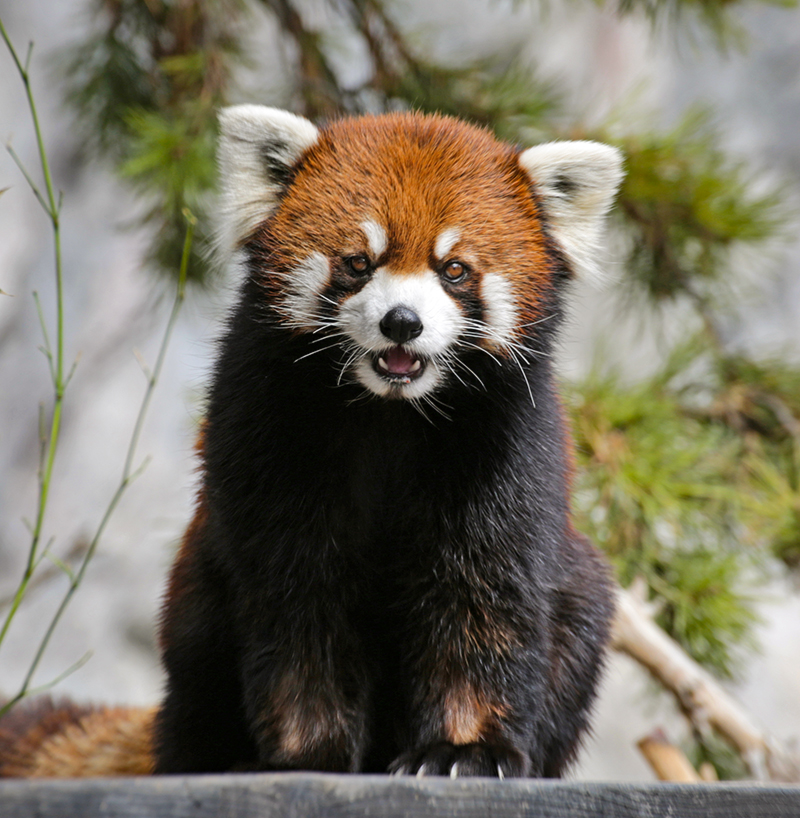 I spent a couple of hours taking photos, but nothing was grabbing me. I’m writing this after I’ve gone through all the shots, and while I got a few I might paint from, most were unremarkable. Some days you feast, others you go hungry. But there are worse ways to spend a cool spring day than walking around with a camera.
I spent a couple of hours taking photos, but nothing was grabbing me. I’m writing this after I’ve gone through all the shots, and while I got a few I might paint from, most were unremarkable. Some days you feast, others you go hungry. But there are worse ways to spend a cool spring day than walking around with a camera.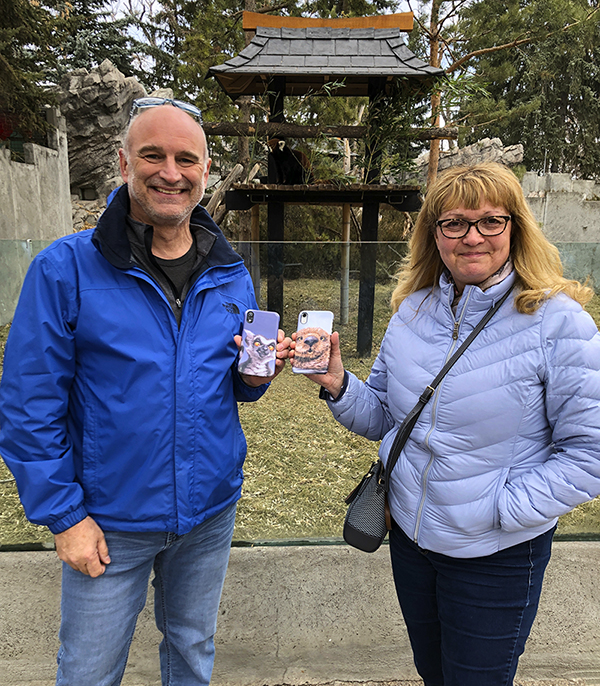 They’re two of my favourite people to show up at my booth, not just because they’ve been great supporters of my work for several years. Here’s their collection.
They’re two of my favourite people to show up at my booth, not just because they’ve been great supporters of my work for several years. Here’s their collection.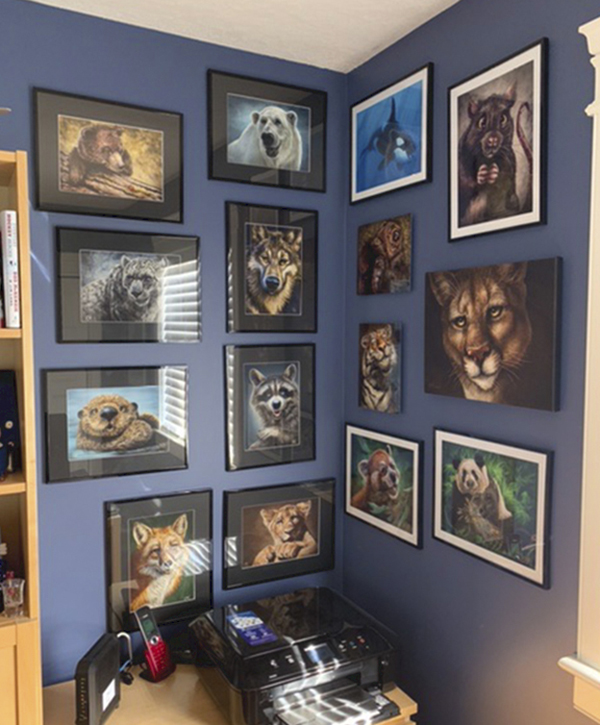 I was already looking forward to seeing them in a couple of weeks, but to run into them at the zoo, on a quiet random weekday in a city of 1.3 million people, was truly strange. I don’t know how long we stood there catching up, but it was getting a little chilly, so we walked around the zoo together. I realized that what had started as a bad day had suddenly become a very good one.
I was already looking forward to seeing them in a couple of weeks, but to run into them at the zoo, on a quiet random weekday in a city of 1.3 million people, was truly strange. I don’t know how long we stood there catching up, but it was getting a little chilly, so we walked around the zoo together. I realized that what had started as a bad day had suddenly become a very good one.
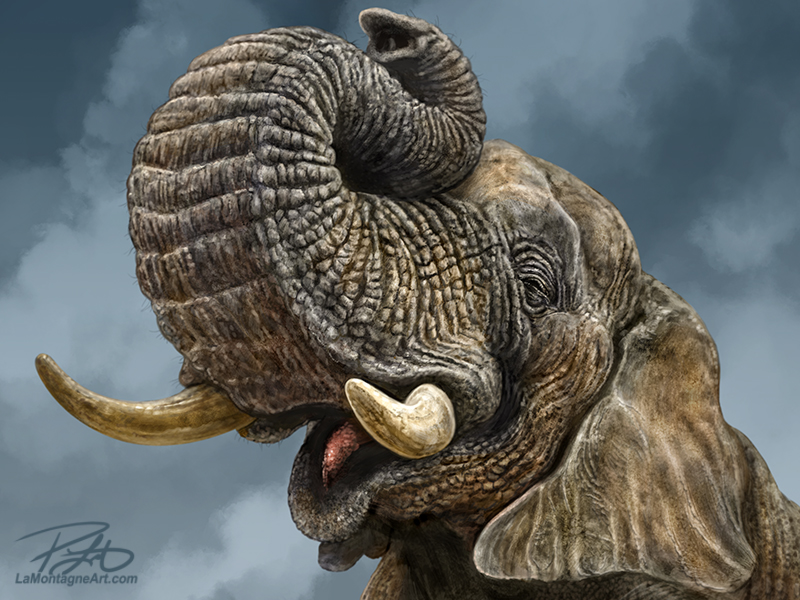 After more than two years of procrastinating, I finally finished this painting of an African elephant.
After more than two years of procrastinating, I finally finished this painting of an African elephant.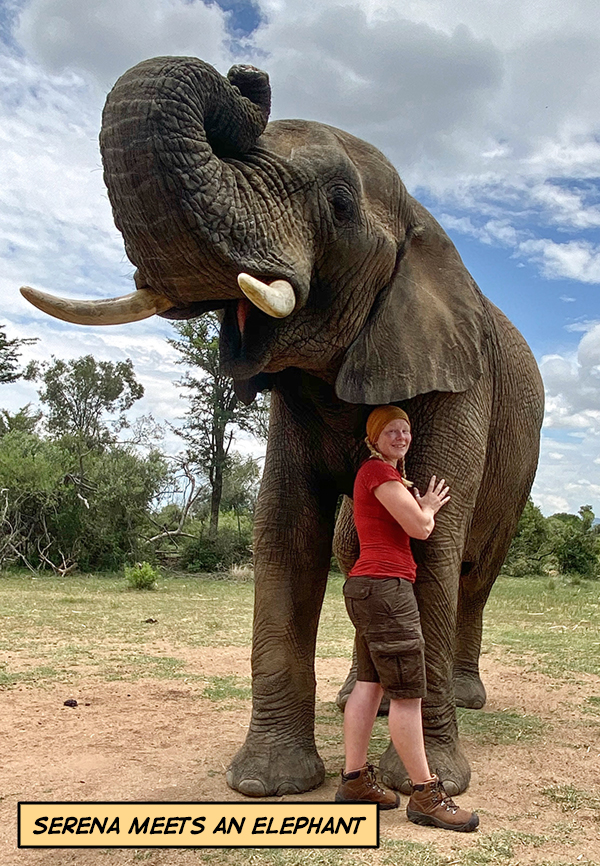
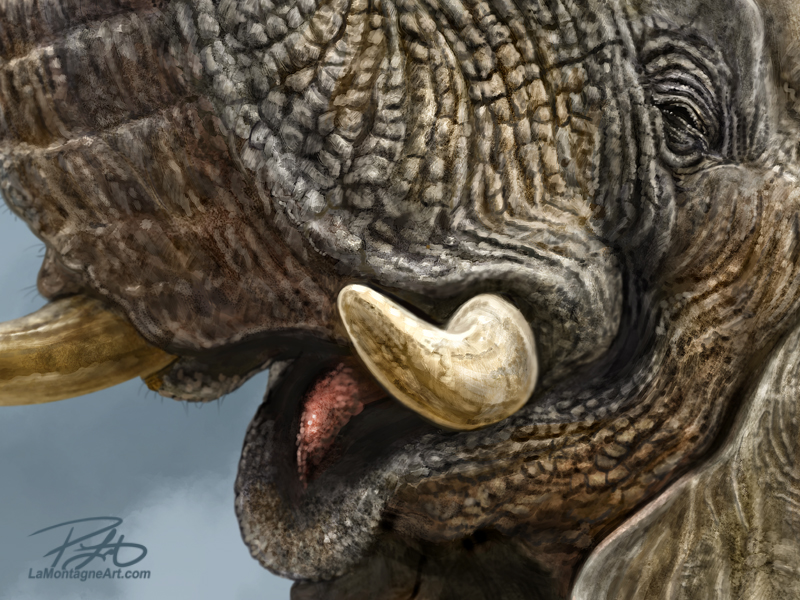 Secondly, the full-size four-day
Secondly, the full-size four-day 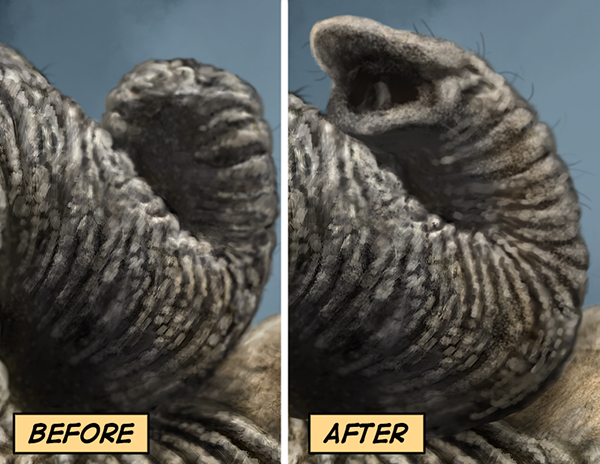 I sent a couple of changes to Serena, and she helped me get it right. She felt bad for having to tell me about it after I’d finished the painting, but I told her better than after I had bought dozens of prints, and coasters, trivets, magnets, and other licensed merchandise had gone into production.
I sent a couple of changes to Serena, and she helped me get it right. She felt bad for having to tell me about it after I’d finished the painting, but I told her better than after I had bought dozens of prints, and coasters, trivets, magnets, and other licensed merchandise had gone into production.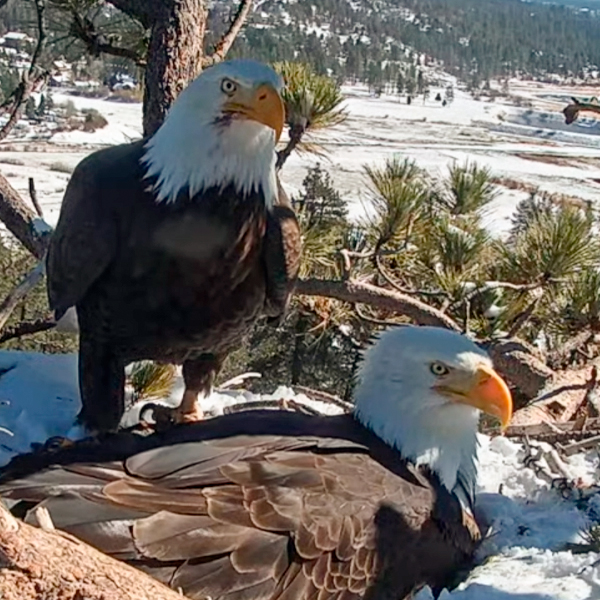
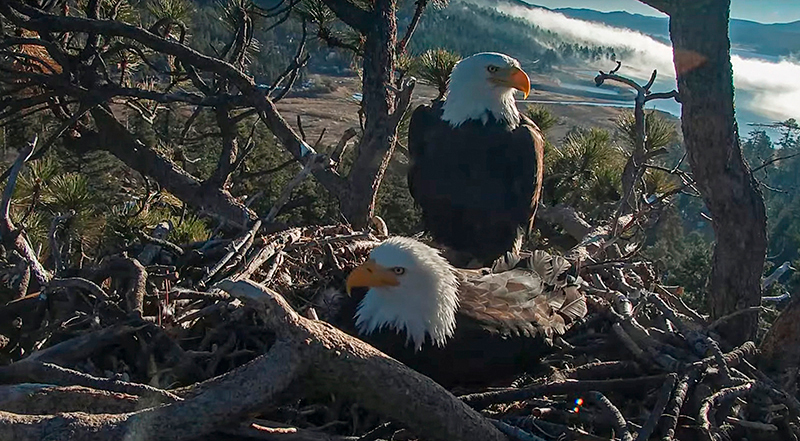 Late last month, a subscriber sent me a
Late last month, a subscriber sent me a 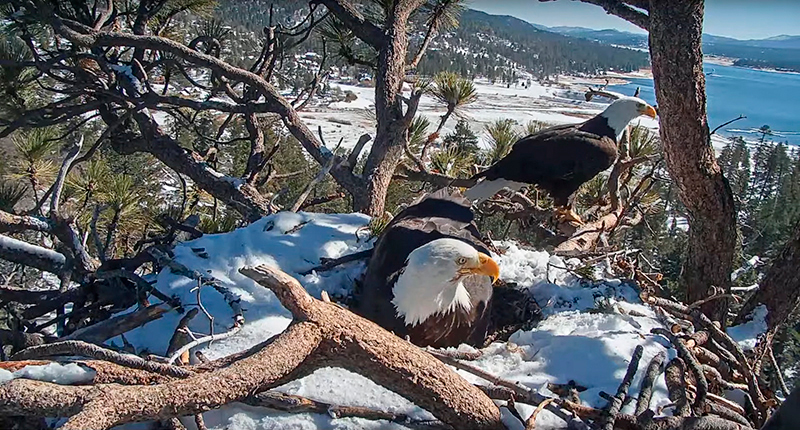
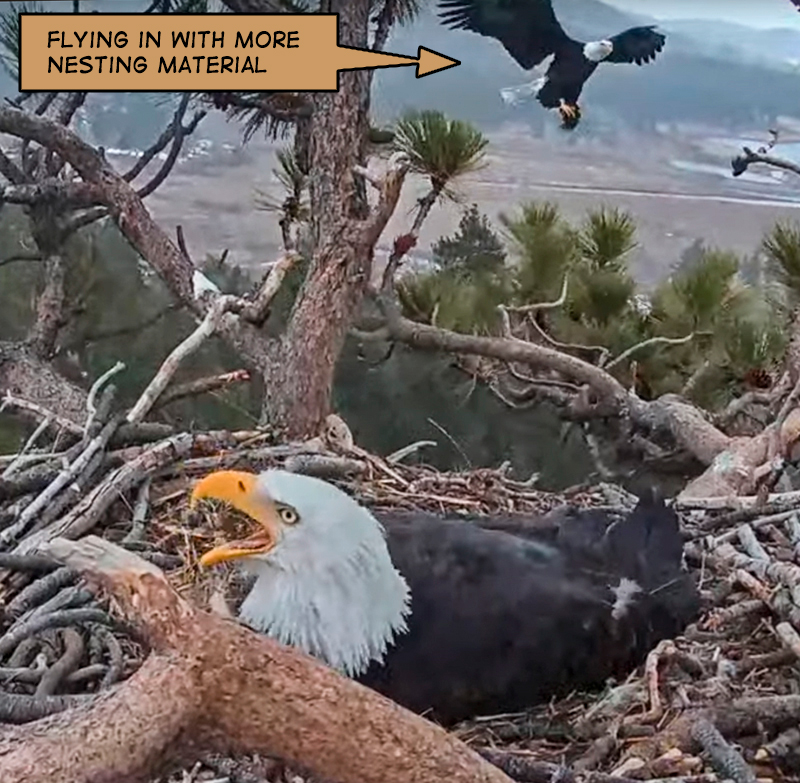
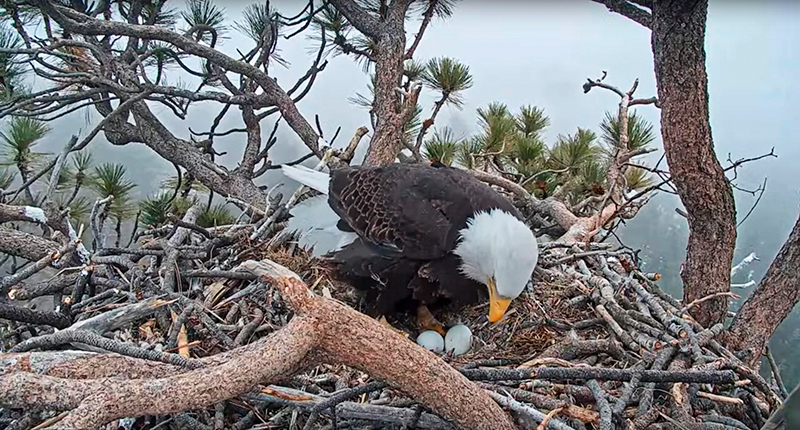
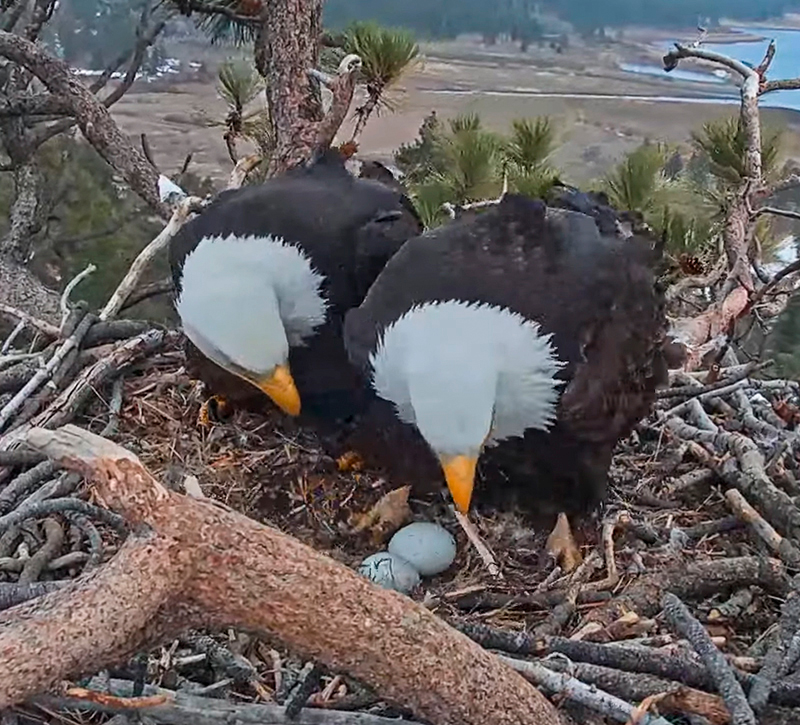 I’ve enjoyed watching the two eagles switch off incubating the eggs so the other can go eat, fending off marauding ravens, and interacting with each other. The chatter between them when one flies in is amusing and fascinating. That tree also gets rocking when the Santa Ana winds blow over the lake. A snowstorm blew in fast and heavy last week, and while the eagles certainly didn’t look like they were enjoying themselves, they handled it well.
I’ve enjoyed watching the two eagles switch off incubating the eggs so the other can go eat, fending off marauding ravens, and interacting with each other. The chatter between them when one flies in is amusing and fascinating. That tree also gets rocking when the Santa Ana winds blow over the lake. A snowstorm blew in fast and heavy last week, and while the eagles certainly didn’t look like they were enjoying themselves, they handled it well.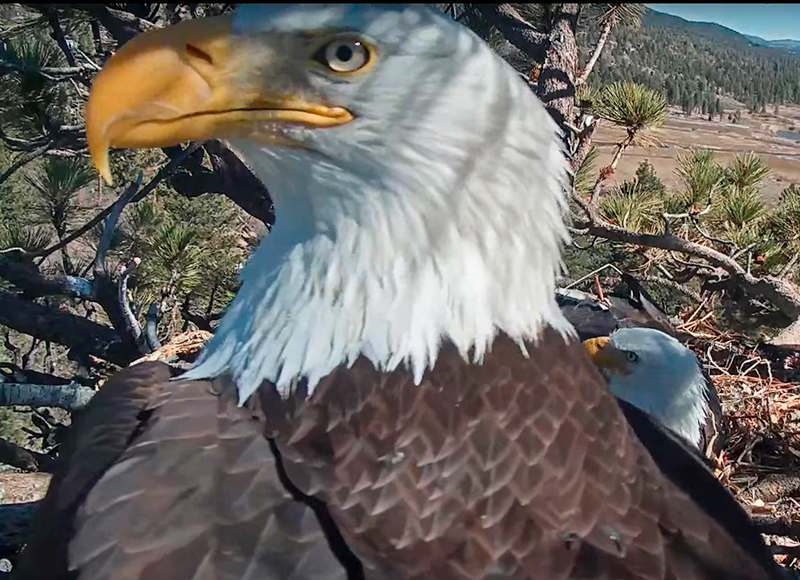

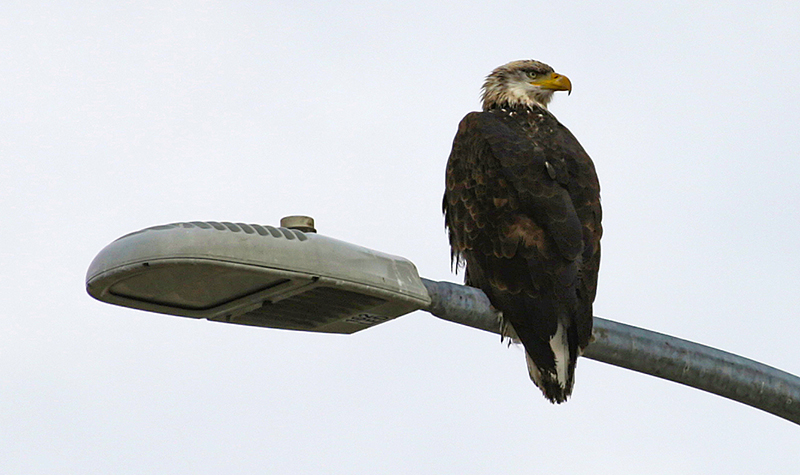 It was a scraggly-looking thing with uneven plumage—likely a juvenile, younger than five years old as the head feathers hadn’t yet turned white. Unfortunately, the pics aren’t anything I can use for reference, but it was still fun to see.
It was a scraggly-looking thing with uneven plumage—likely a juvenile, younger than five years old as the head feathers hadn’t yet turned white. Unfortunately, the pics aren’t anything I can use for reference, but it was still fun to see.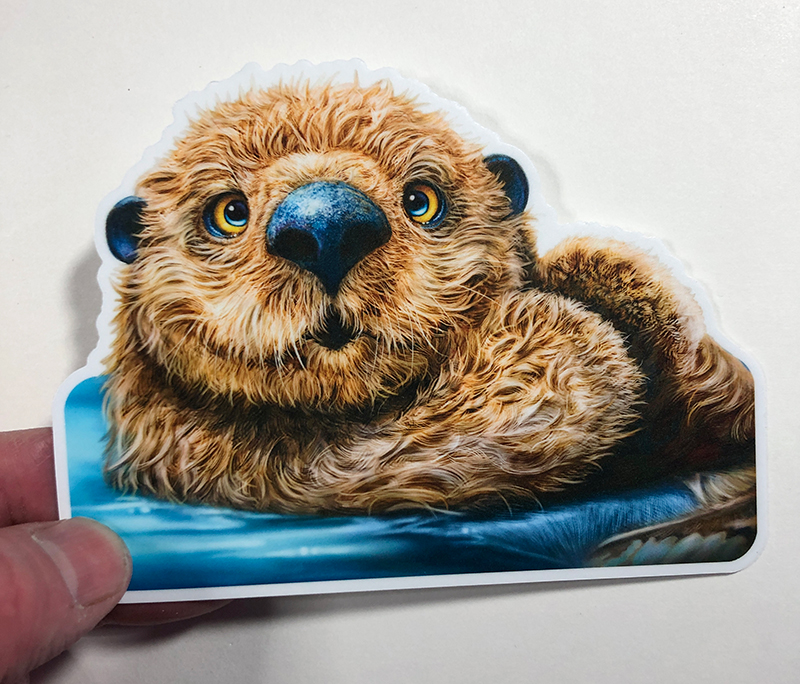
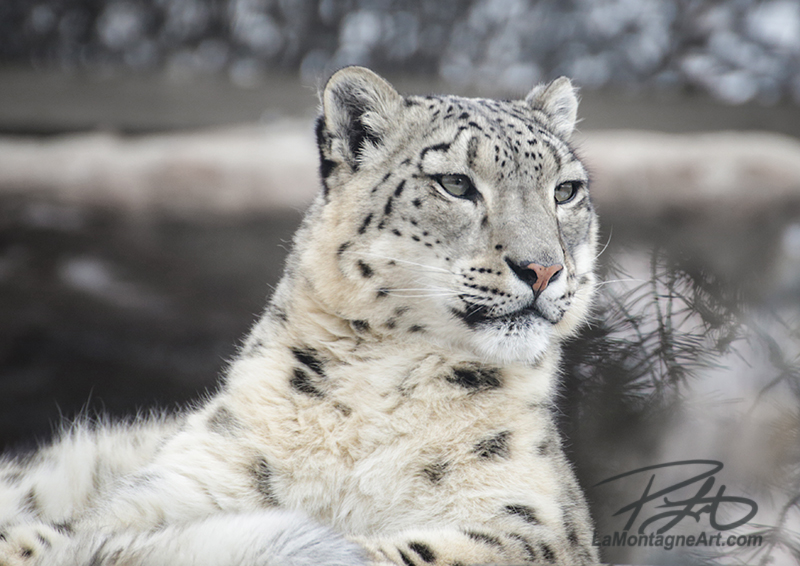 It was a pleasant excursion away from my desk and office, but I also realized how much more of a hermit I’ve become the past couple of years. Even though the roads were good, traffic was light, and I wasn’t around that many people, I’m happy to be back at my Wacom display alone this morning, continuing a painting of a happy, playful dog.
It was a pleasant excursion away from my desk and office, but I also realized how much more of a hermit I’ve become the past couple of years. Even though the roads were good, traffic was light, and I wasn’t around that many people, I’m happy to be back at my Wacom display alone this morning, continuing a painting of a happy, playful dog.
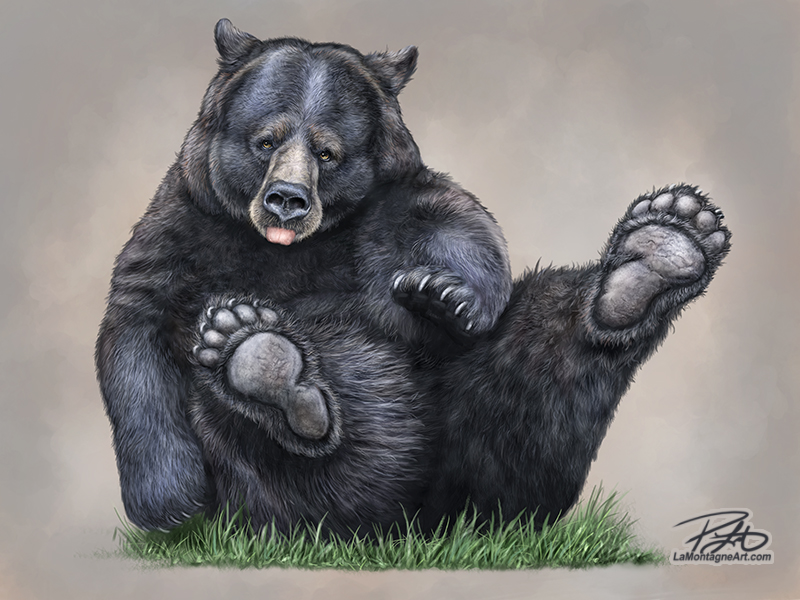
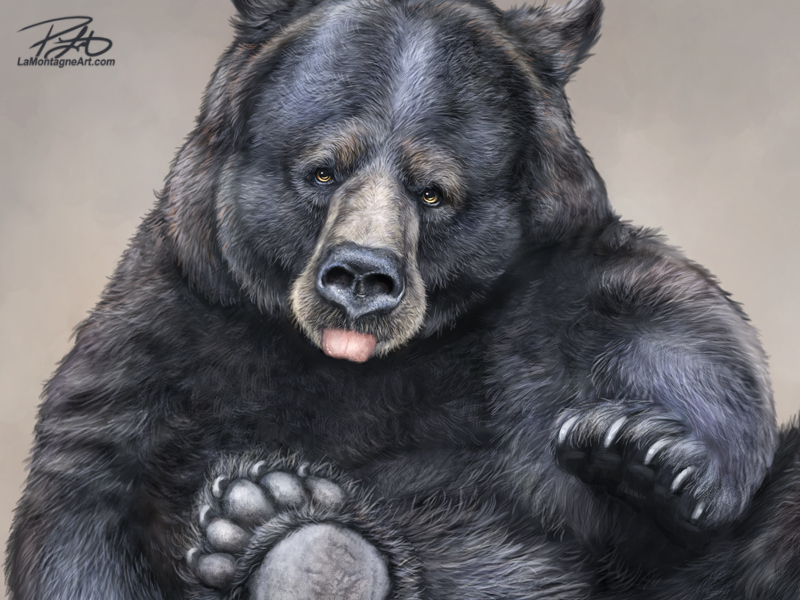



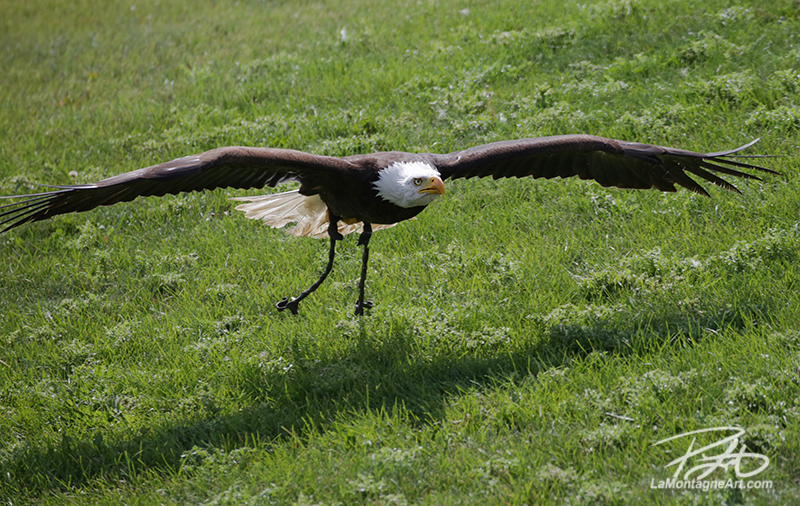 This past Thursday, I drove the four hours down to Coaldale, Alberta, to visit the
This past Thursday, I drove the four hours down to Coaldale, Alberta, to visit the 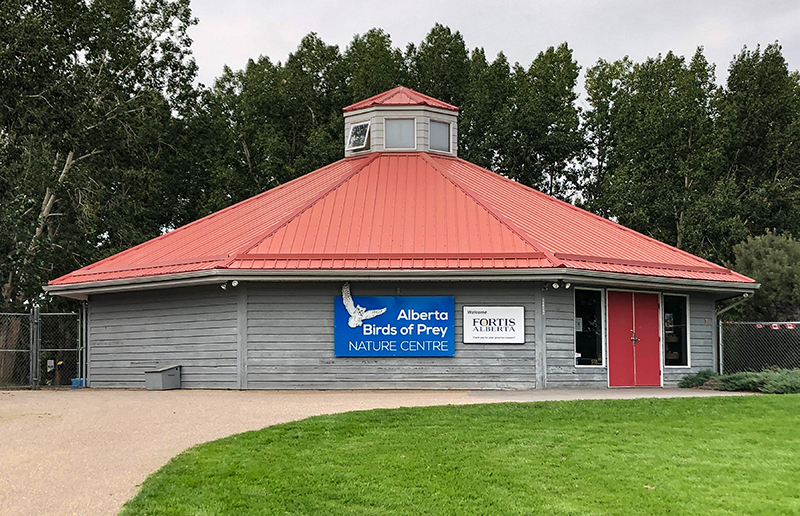 The Alberta Birds of Prey Foundation began in 1982 when there weren’t any wildlife rescue endeavours operating in Western Canada. Colin has been rescuing, rehabilitating, and releasing birds of prey back into the wild for almost forty years. Birds with permanent injuries or those that can’t be released have been given homes at the centre, a beautiful spot in southern Alberta, right in the middle of a reclaimed wetlands area.
The Alberta Birds of Prey Foundation began in 1982 when there weren’t any wildlife rescue endeavours operating in Western Canada. Colin has been rescuing, rehabilitating, and releasing birds of prey back into the wild for almost forty years. Birds with permanent injuries or those that can’t be released have been given homes at the centre, a beautiful spot in southern Alberta, right in the middle of a reclaimed wetlands area.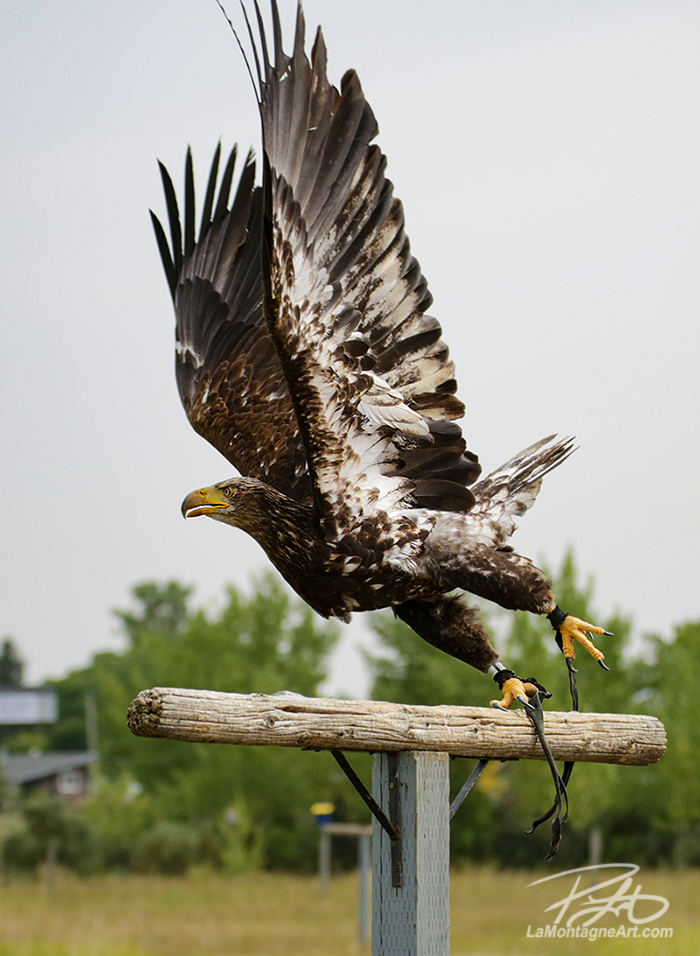 As with any non-profit operation, caring for the birds is only half the battle, and it’s a never-ending quest to raise enough funds and resources. To attract people to the centre, it must be safe, appealing, and well-maintained, a feat they have managed well. The Alberta Birds of Prey Centre is an attractive, professional, and welcoming facility. All the enclosures, aviaries and structures are top-notch, serving as housing and rehab areas for the birds and an educational facility for the public.
As with any non-profit operation, caring for the birds is only half the battle, and it’s a never-ending quest to raise enough funds and resources. To attract people to the centre, it must be safe, appealing, and well-maintained, a feat they have managed well. The Alberta Birds of Prey Centre is an attractive, professional, and welcoming facility. All the enclosures, aviaries and structures are top-notch, serving as housing and rehab areas for the birds and an educational facility for the public.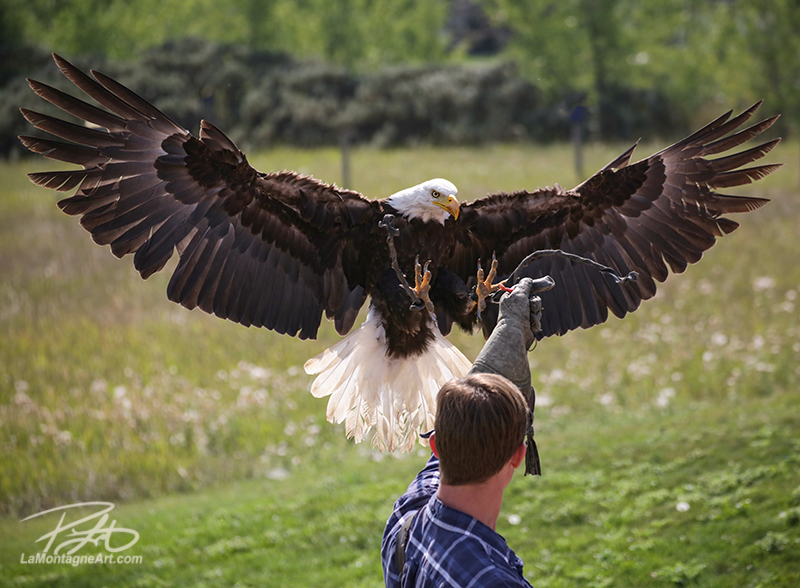 I’ve wanted to get down to the centre more than once this summer, but as with all things these past many months, best intentions haven’t always aligned with feasibility. Plagued with long stretches of record-breaking heat, a thick choking blanket of wildfire smoke for weeks on end and the uncertainty of changing pandemic restrictions, this summer has been challenging. Add long hours in the office working to diversify my business, and I haven’t been able to get away.
I’ve wanted to get down to the centre more than once this summer, but as with all things these past many months, best intentions haven’t always aligned with feasibility. Plagued with long stretches of record-breaking heat, a thick choking blanket of wildfire smoke for weeks on end and the uncertainty of changing pandemic restrictions, this summer has been challenging. Add long hours in the office working to diversify my business, and I haven’t been able to get away.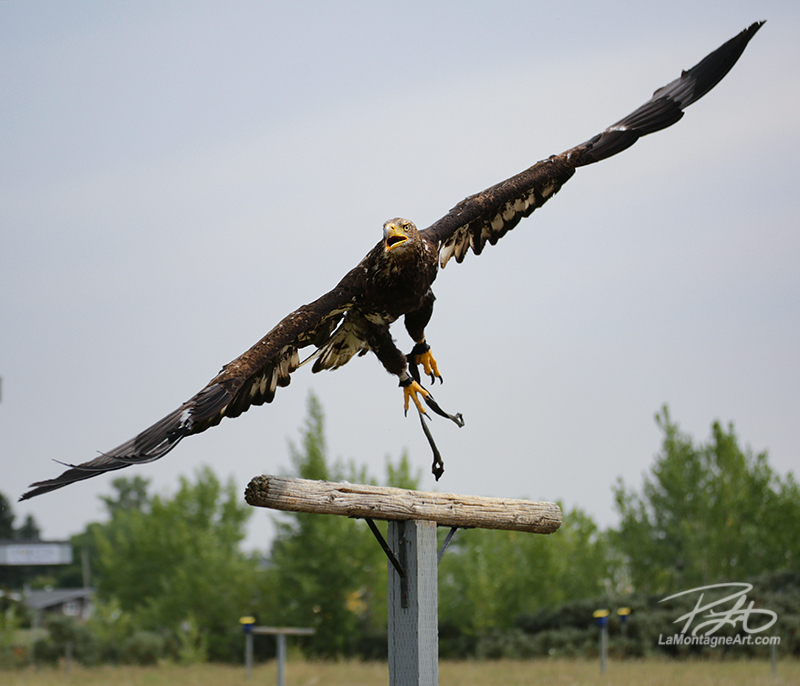 Over two days, I watched them fly a mature bald eagle, a juvenile bald eagle, and two red-tailed hawks. Bald eagles don’t get their full head of white feathers until four or five years old. One of the staff suggested on the second morning that I lie down on the ‘runway’ to take some head-on shots of the red-tailed hawk. To take advantage of a cushion of air just above the ground, the birds drop down low when they’re flying back and forth, only climbing again at the end.
Over two days, I watched them fly a mature bald eagle, a juvenile bald eagle, and two red-tailed hawks. Bald eagles don’t get their full head of white feathers until four or five years old. One of the staff suggested on the second morning that I lie down on the ‘runway’ to take some head-on shots of the red-tailed hawk. To take advantage of a cushion of air just above the ground, the birds drop down low when they’re flying back and forth, only climbing again at the end.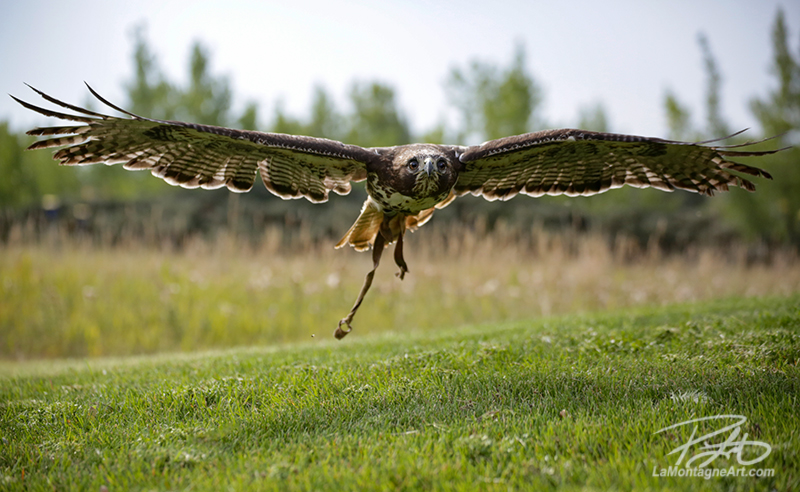 I could write a few thousand more words on their important work and all I learn whenever I visit the Alberta Birds of Prey Centre. The staff share some fascinating and amusing stories during the flight training presentation and are always available for questions from visitors. Nothing is off-limits, and they’re more than willing to talk about the challenges they face each day while caring for these birds.
I could write a few thousand more words on their important work and all I learn whenever I visit the Alberta Birds of Prey Centre. The staff share some fascinating and amusing stories during the flight training presentation and are always available for questions from visitors. Nothing is off-limits, and they’re more than willing to talk about the challenges they face each day while caring for these birds.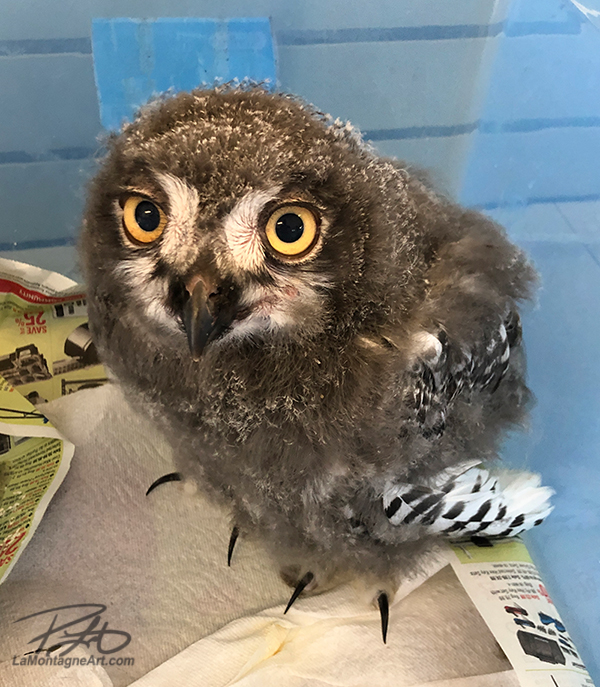
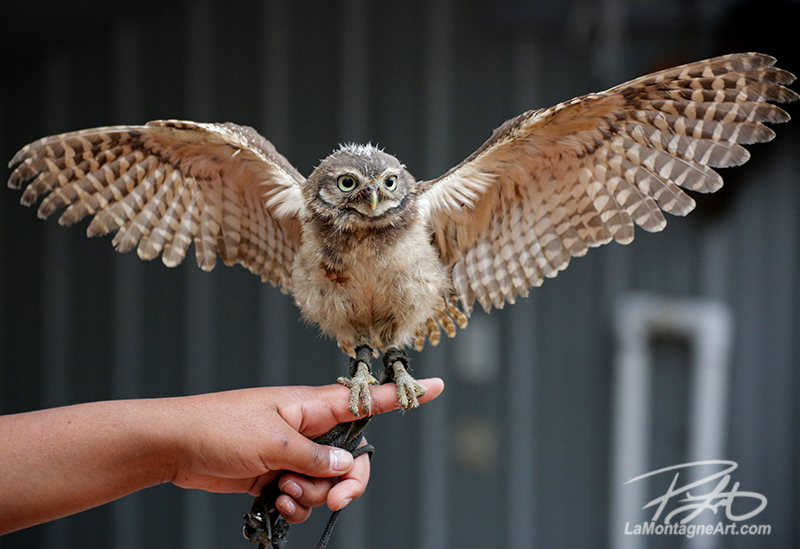
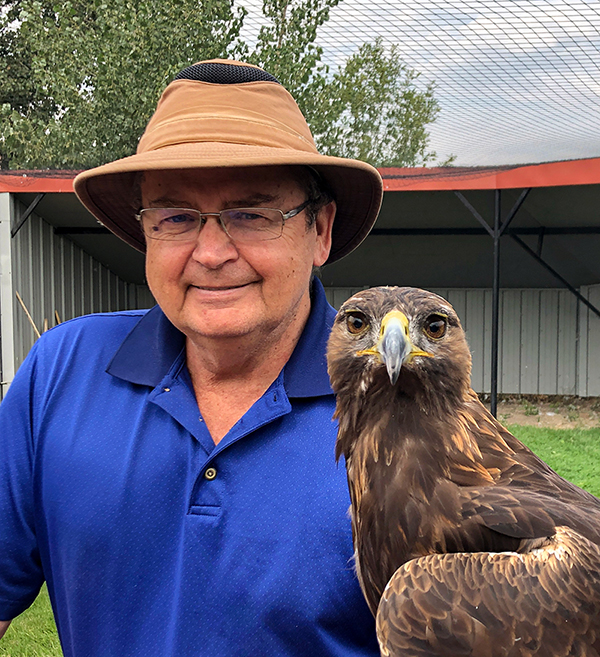
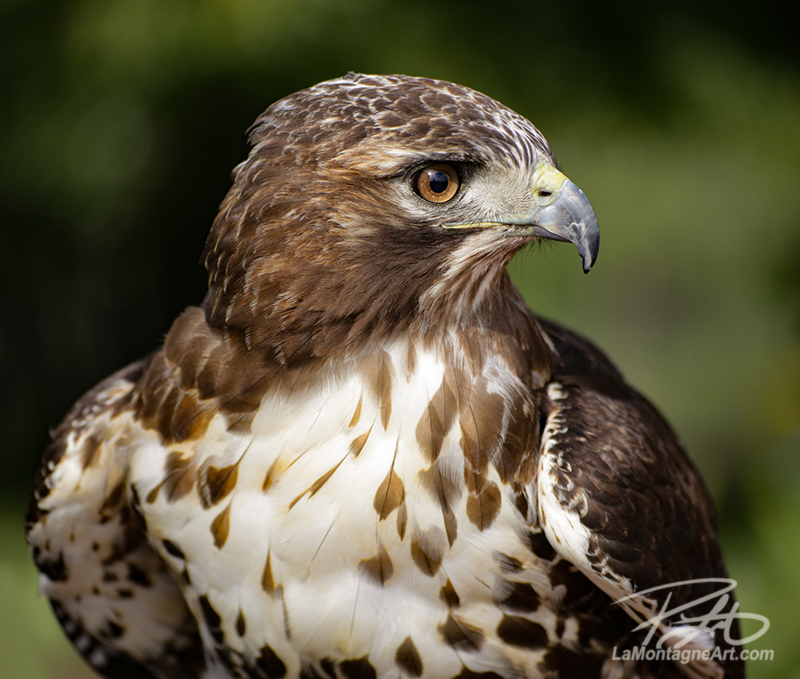 Best of all, I finally have more than enough shots of a red-tailed hawk, so many good ones that I’ll have a hard time deciding which to use. Or maybe I’ll have to paint more than one. It’s a good problem to have. Feathers are much harder to paint than fur, especially when intricate patterns are involved, so don’t expect a painting anytime soon. It’ll likely be a winter project, but one I’m eager to start.
Best of all, I finally have more than enough shots of a red-tailed hawk, so many good ones that I’ll have a hard time deciding which to use. Or maybe I’ll have to paint more than one. It’s a good problem to have. Feathers are much harder to paint than fur, especially when intricate patterns are involved, so don’t expect a painting anytime soon. It’ll likely be a winter project, but one I’m eager to start.
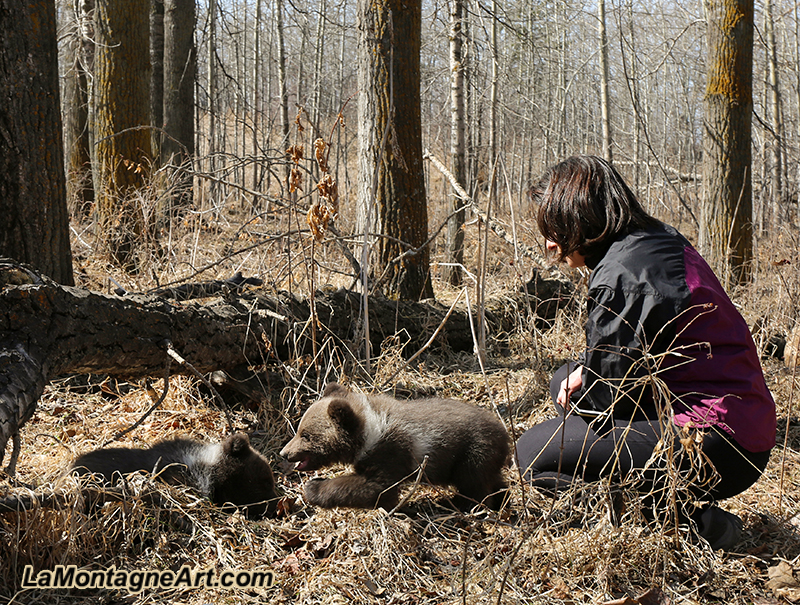 Earlier this week, Shonna and I were thrilled to be invited to
Earlier this week, Shonna and I were thrilled to be invited to 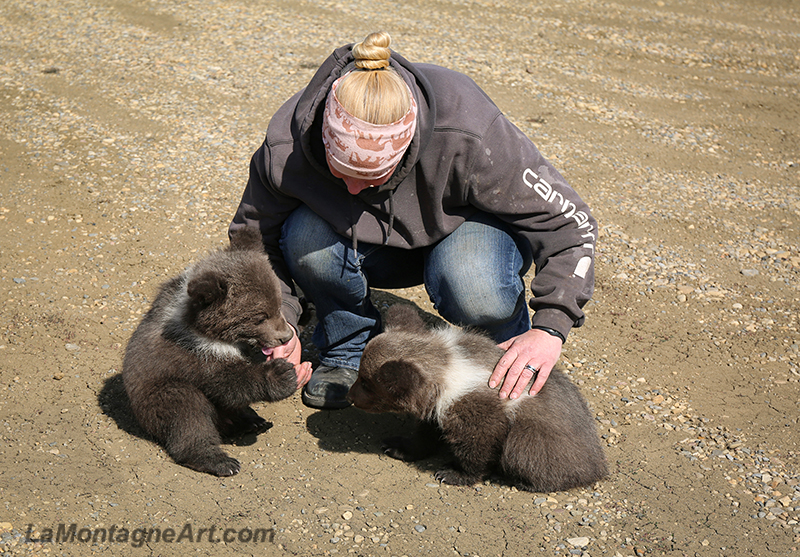
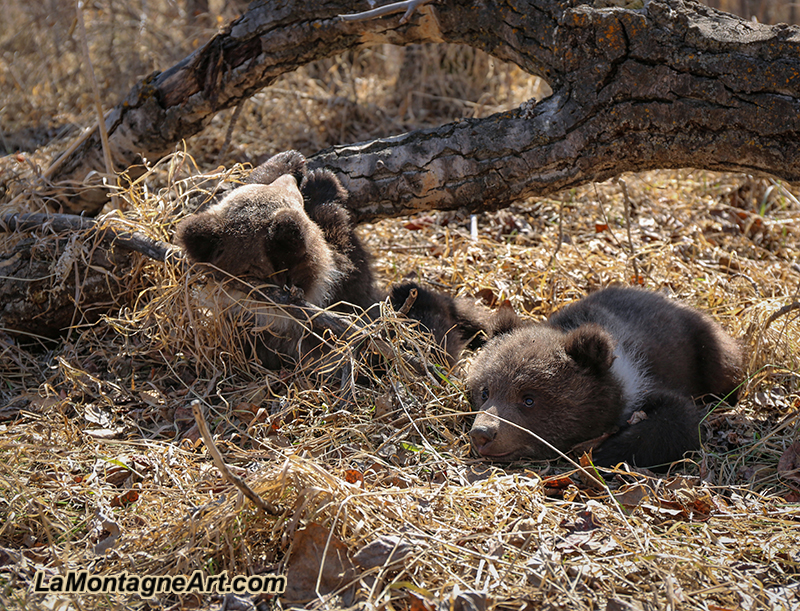 It’s with no small amount of gratitude that I enjoy such a close relationship with Discovery Wildlife Park. Their allowing me close contact with the animals over the past several years is a profound trust I don’t take lightly.
It’s with no small amount of gratitude that I enjoy such a close relationship with Discovery Wildlife Park. Their allowing me close contact with the animals over the past several years is a profound trust I don’t take lightly.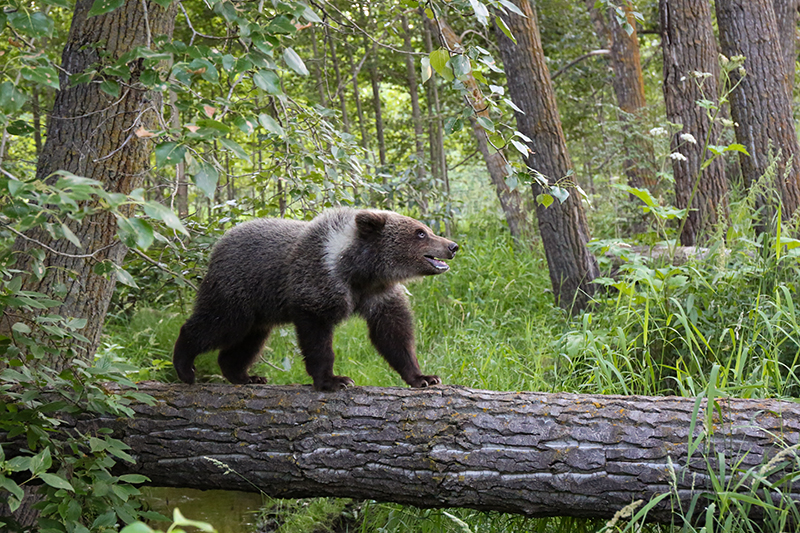 When they’re small, many of the animals spend plenty of time in these woods, where they can run, explore, climb trees, eat berries, and play.
When they’re small, many of the animals spend plenty of time in these woods, where they can run, explore, climb trees, eat berries, and play.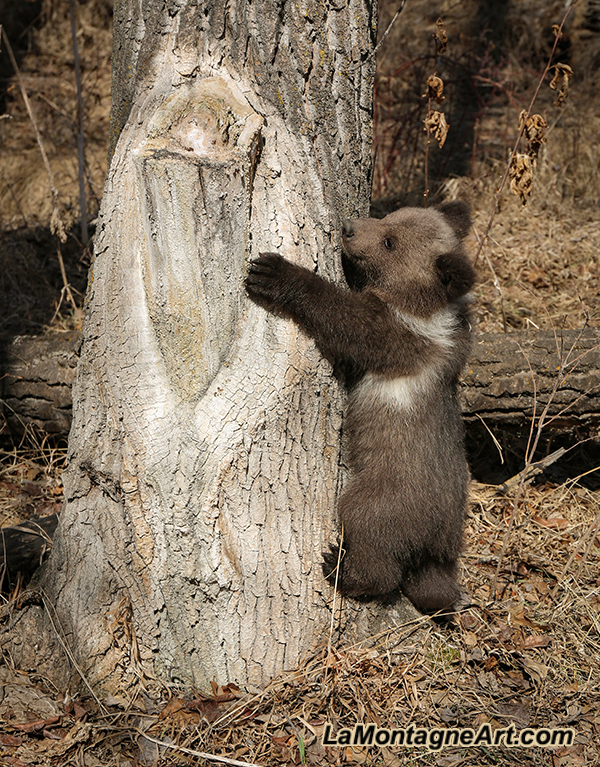 The following morning, I sent Serena a text asking how Piper was doing.
The following morning, I sent Serena a text asking how Piper was doing.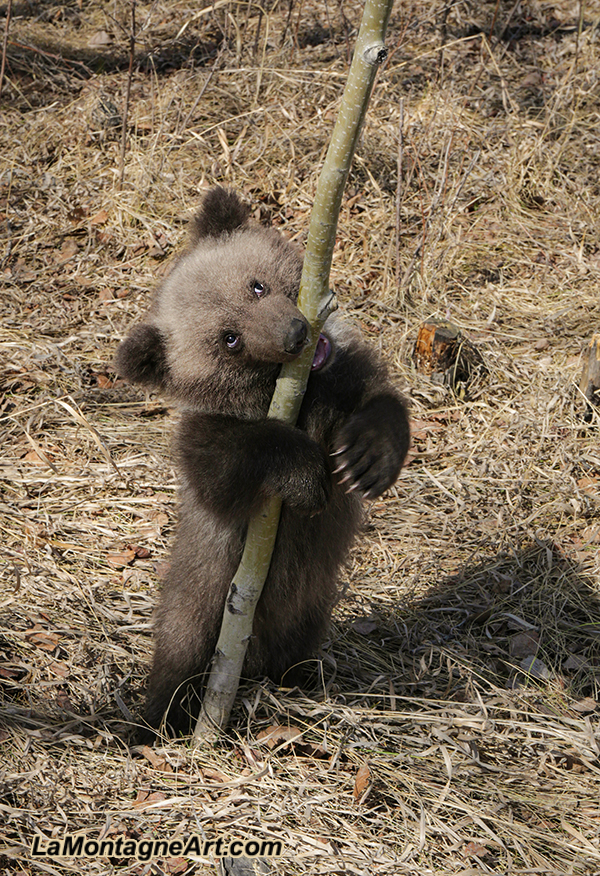 Bos was much more subdued, a little lazier, but curious and seemed to be enjoying himself as he chewed on trees, dug in the dirt, and wrestled with his adopted sibling.
Bos was much more subdued, a little lazier, but curious and seemed to be enjoying himself as he chewed on trees, dug in the dirt, and wrestled with his adopted sibling.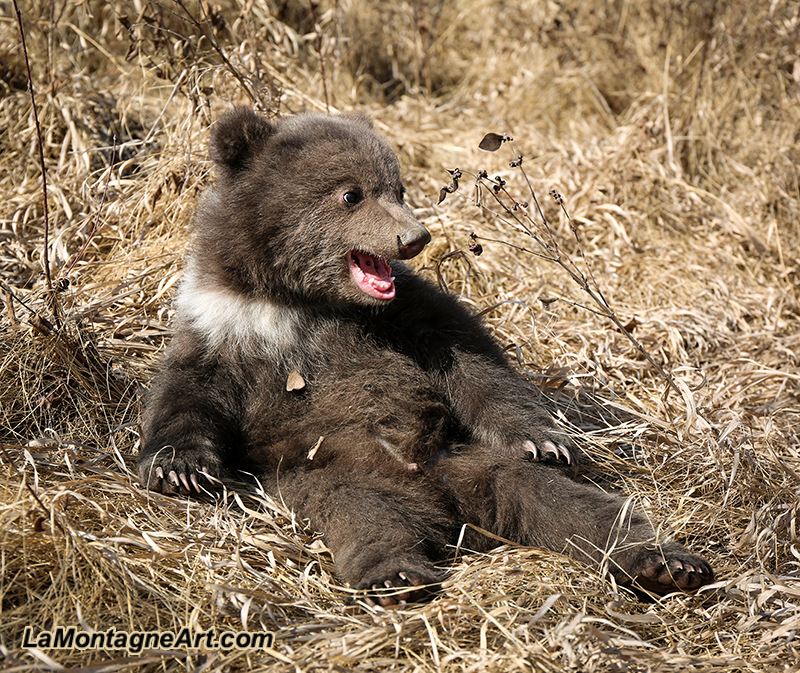
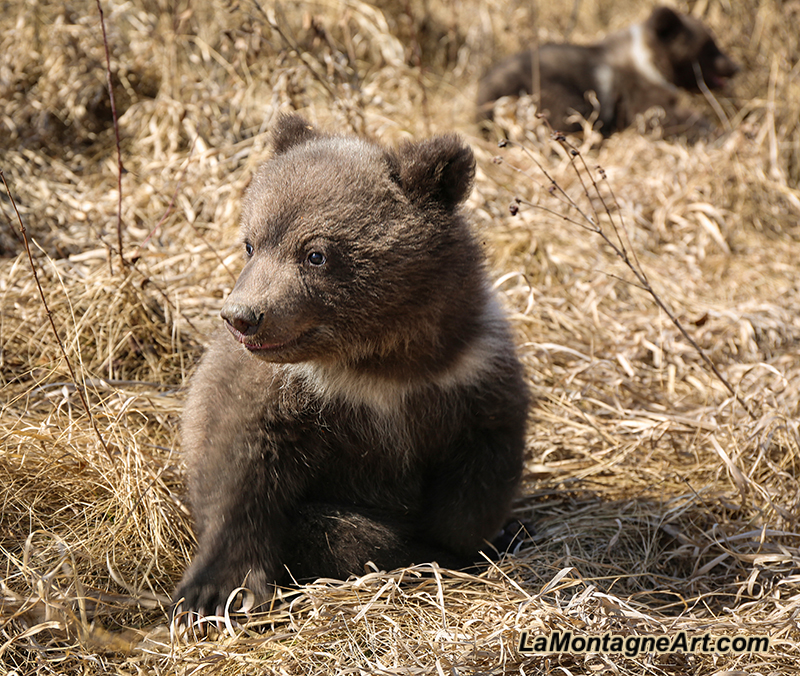
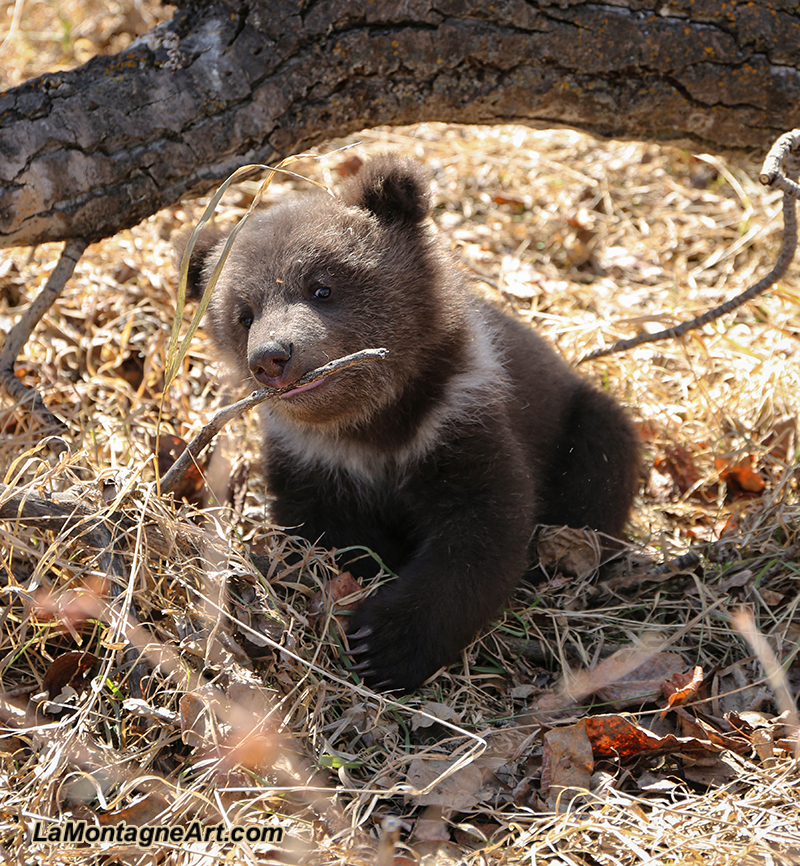 Though she’s always had an overall genial way about her, Berkley went through a bit of a rebellious teenage phase where she would push Serena’s buttons to test her boundaries. It’ll be interesting to see how these cubs grow into their personalities.
Though she’s always had an overall genial way about her, Berkley went through a bit of a rebellious teenage phase where she would push Serena’s buttons to test her boundaries. It’ll be interesting to see how these cubs grow into their personalities.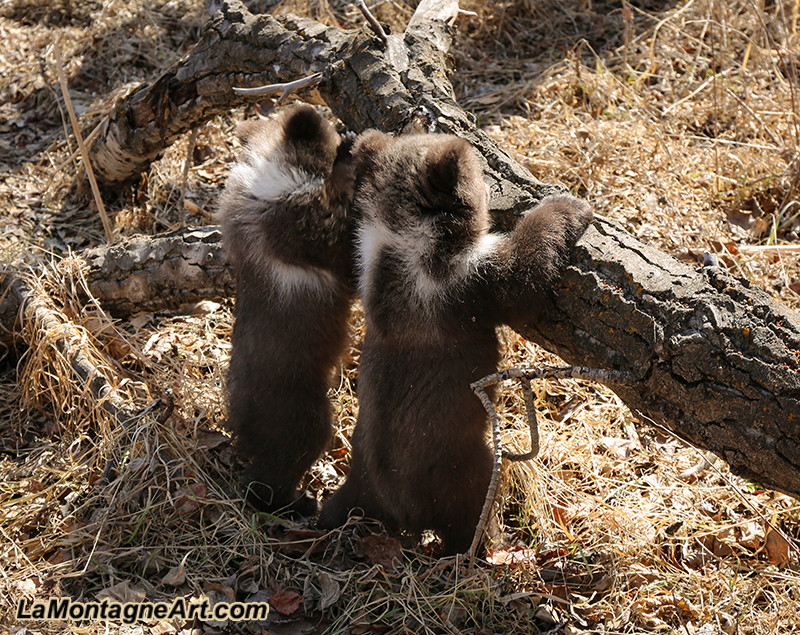 In the hour and a half we were out in the woods with the cubs, I took just under 1500 photos. With bright sunshine and dark shadows, the lighting wasn’t ideal. The bears were often between me and the sun, so I didn’t get as much light on their faces as I would generally like. Hard to complain, though, since I was watching bear cubs play in the woods. I wanted to take some video, but it was too much to handle and would have ruined the experience.
In the hour and a half we were out in the woods with the cubs, I took just under 1500 photos. With bright sunshine and dark shadows, the lighting wasn’t ideal. The bears were often between me and the sun, so I didn’t get as much light on their faces as I would generally like. Hard to complain, though, since I was watching bear cubs play in the woods. I wanted to take some video, but it was too much to handle and would have ruined the experience.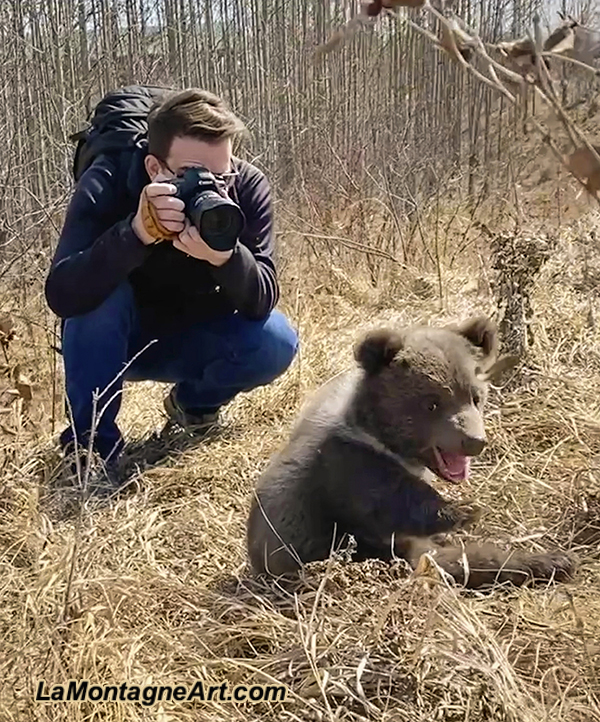
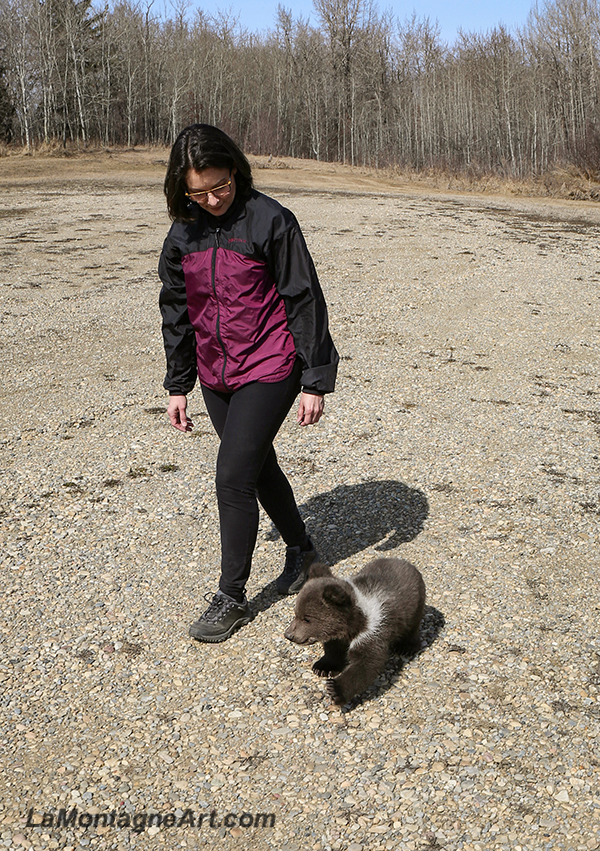
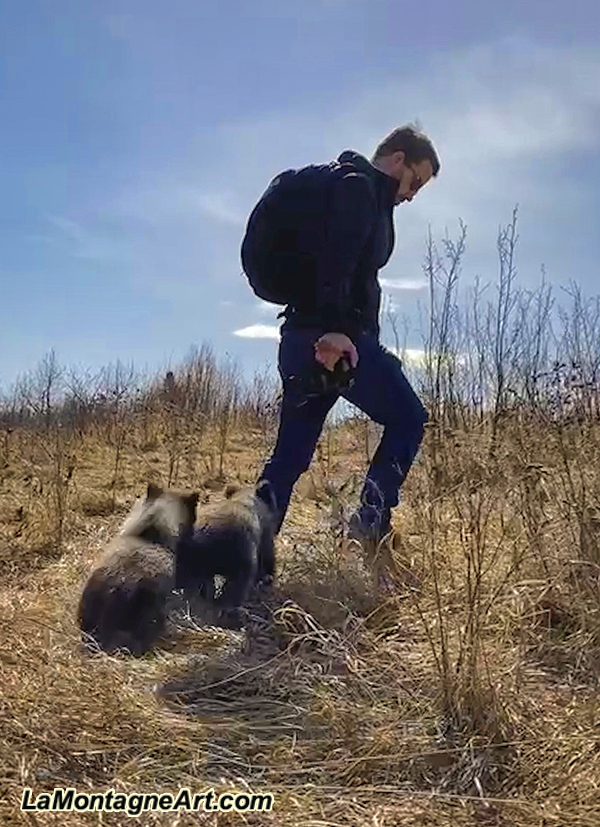 As I don’t like hoarding photos, I’ve already gone through them all and kept just over 100. Most are shots I simply liked, the ones you see here. But I did get about a dozen that I think will be the seeds for future work; there are two paintings in there for sure.
As I don’t like hoarding photos, I’ve already gone through them all and kept just over 100. Most are shots I simply liked, the ones you see here. But I did get about a dozen that I think will be the seeds for future work; there are two paintings in there for sure.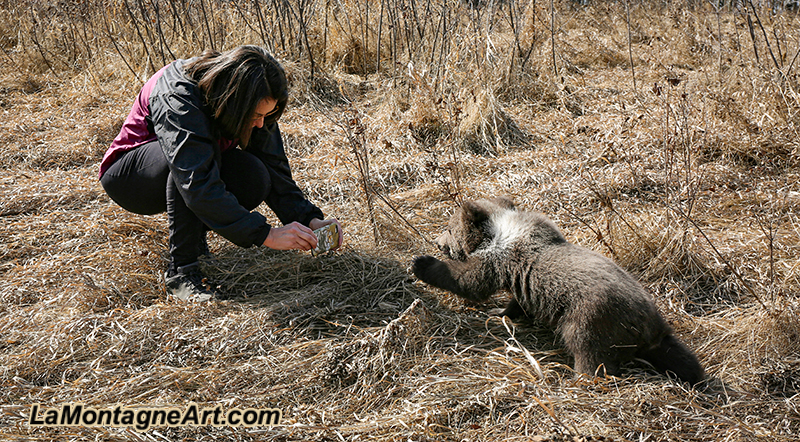
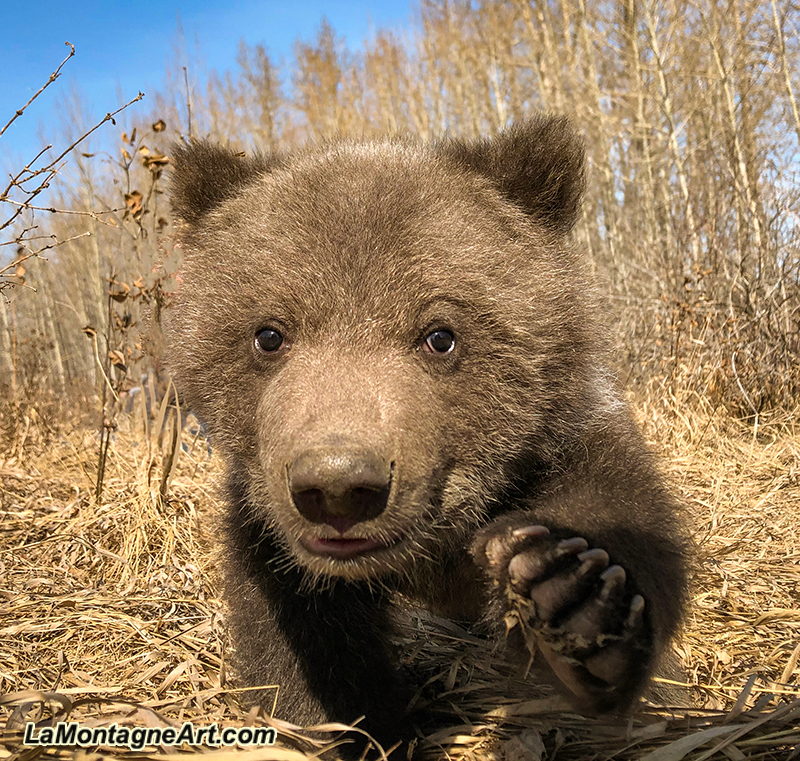 If you’d like to watch the cubs grow up, you can follow
If you’d like to watch the cubs grow up, you can follow 
